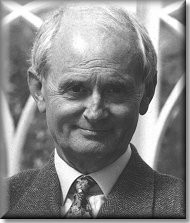| LIVING ARCHETYPES: The selected works of Anthony Stevens (Routledge, 2016) |
| A selection of papers and chapters from the course of Anthony Stevens' career highlighting episodes in the progress of his quest to place archetypal theory on a sound scientific foundation. |
To view
covers, description, reviews and availability  |
| THE TALKING CURE in 3 volumes: Psychotherapy, Past, Present and Future (Inner City Books, 2013) |
| "Examines how the major schools of psychodynamic theory grew out of the psychology of their charismatic founders and have subsequently turned into rival “sects”. How may the differences between them be transcended?" |
To view
covers, description, reviews and availability  |
The
Roots of War and Terror (Continuum, 2004) |
| "Provides profound insights into the
nature and origins of armed conflict, locating the problem primarily in
the psychology and anatomy of the human male." |
To view
cover, description, reviews and availability  |
|
| Archetype
Revisited: An Updated Natural History of the Self (Routledge,
2002; Inner City Books, 2003, Routledge Mental Health Classic Edition, 2015) |
| This classic text is a ground-breaking
revelation of the links between Jungís archetypes of the
collective unconscious and evolutionary disciplines such as animal
ecology and evolutionary psychology. A far-ranging introduction to
archetypes in theory and practice. |
To view
cover, description, reviews and availability  |
|
| Prophets, Cults,
and Madness written in collaboration with John Price (Duckworth,
2000) |
| Cult leaders inspire intense loyalty
among their followers, yet they strike outsiders as half mad. Why are
there so many of them? And why do they and their crazy ideas proliferate? |
To view
cover, description, reviews and availability  |
|
| Evolutionary
Psychiatry: A New Beginning written in collaboration with John
Price (Routledge, 2000, Routledge Mental Health Classic Edition, 2015,) |
| "When the first edition of this
book appeared (1996), I rated it among the top 25 books of the
decade." Hagop S. Akiskal, M.D., Editor-in-Chief, Journal of
Affective Disorders. |
To view
cover, description, reviews and availability  |
|
| Ariadneís Clue:
A Guide to the Symbols of Humankind (Allen Lane, Penguin, 1998; The Princeton University Press, 1999) |
| "Stevens has a unique capacity for
relating myths and symbols to the way our minds function today."
-Anthony Storr. "Stevens presents vast learning easily and precisely
in prose that is at once calm and exciting." -E. James Lieberman. |
To view
cover, description, reviews and availability  |
|
| An Intelligent
Personís Guide to Psychotherapy (Duckworth, 1998) |
| "Do you know the difference between
a psychologist and a psychiatrist, a Freudian analyst and a Jungian one -
and how they might fit into our lives? Nor did I. Analyst and writer
Anthony Stevens explains all this in his excellent book." - Hilary
Boyd, The Express |
To view
cover, description, reviews and availability  |
|
| Private Myths:
Dreams and Dreaming (Hamish Hamilton, 1996; Harvard University
Press, 1997) |
| "Bravely direct, cogent and
fascinating, half handbook, half history, of significance to anyone
interested in the life of the mind." -Andrew Motion, The Observer |
To view
cover, description, reviews and availability  |
|
| JUNG: A Very Short
Introduction (Oxford University Press, 1994; Republished as an
illustrated edition, 2001; issued as an audio book by Naxos, 2003, read by Tim Pigott-Smith) |
| "A new volume in the acclaimed Past
Masters series, this is the most lucid and up-to-date introduction to the
thought of Carl Gustav Jung." Editorial Reviews |
To view
cover, description, reviews and availability  |
|
| The Two
Million-Year-Old Self (Texas A & M University Press, 1993) |
| "Those who wish to get the latest
synopsis of the way our evolution has shaped our mentality can do no
better than read Anthony Stevensís book." M.R.A. Chance, Editor of Social Fabrics of the Mind. |
To view
cover, description, reviews and availability  |
|
| On Jung (Penguin, 1991; Princeton University Press, 1991) |
| "The reader is treated to both a
concise statement of Carl Gustav Jungís theories of life-stage
development and a parallel narrative of Jungís experiences as he moved
through each of these stages." LogosWord Webstore Reviews |
To view
cover, description, reviews and availability  |
|
| Withymead (Coventure/Element Books, 1986) |
| An intimate and dramatic account of a
residential therapeutic community which pioneered the use of art therapy
and Jungian analysis in a family setting. |
To view
cover, description, reviews and availability  |
